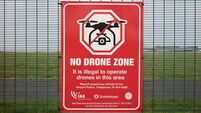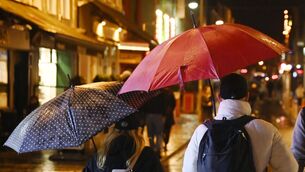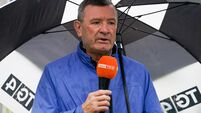Watchdog warns of new 'terror group'
A recently-formed hardline republican terror group in the North is becoming more dangerously active, security chiefs in were warned today.
In its latest assessment of paramilitary activity, the Independent Monitoring Commission (IMC) said Oglaigh nahEireann had been involved in pipe bomb attacks against the police and an attack at a site used by the travelling community.
The four-member commission also observed the Real IRA had stepped up its activity with a spate of firebomb attacks and aspired to mount an attack in Britain, while the Continuity IRA remained a threat.
A year ago, the IMC revealed a breakaway faction from the Continuity IRA, Oglaigh na hEireann (ONH) had been formed and was trying to poach new members from the Real IRA.
The group had been involved in robberies and bomb hoaxes and had sought weapons.
In the latest report, the commission said the group was posing a greater threat.
“ONH has become more dangerously active,” the IMC warned.
“We believe it was responsible for two pipe bomb attacks against PSNI officers and premises in September and November and for a bomb which failed to detonate at a travellers’ site in Coalisland in November 2006.
“These are the first explosive devices that ONH has deployed.
“Members of ONH undertook a ’tiger’ kidnapping in October, we think largely for personal gain. ONH continued its attempts to recruit disaffected republicans, in which it had little success, and it was responsible for bomb hoaxes, of which three were discovered in the Castlerock area in September.”
The IMC said there was still heightened activity from the Real IRA (RIRA), which was responsible the 1998 Omagh bomb, between September 1 to November 30 last year.
RIRA was responsible for a firebomb campaign against six DIY stores and two other shops across the North in October and November.
It was also behind two bomb hoaxes in the border city of Newry during November, one shooting and, significantly, a mortar attack against a police station in Craigavon.
“This amounts to the highest level of sustained paramilitary activity since RIRA’s incendiary campaign in the winter of 2004/05,” the commission noted.
“The position is broadly unchanged both as regards RIRA seeking to sustain itself as an organisation (through efforts to recruit and train members, monitor potential targets, gather intelligence and attempts to procure weapons) and as regards criminal activity by members.
“We think that the organisation continues to aspire to mount an attack in Great Britain. We note that the continuing efforts of the law enforcement agencies, north and south, against RIRA have brought a number of successes.”
The Continuity IRA was blamed for firing shots at a police station in Keady, Co Armagh, in November and for two, possibly three, so-called punishment shootings, one assault and threats against a number of people.
The commission believed one of the shootings and the threats were not sanctioned at leadership level.
CIRA was also accused of continuing to engage in other criminal activity and of trying to maintain its paramilitary capability by acquiring weapons, recruiting, training members to use firearms and developing bombs.
The report noted other dissident republican incidents occurred which could not be attributed to a specific group.
These were assaults – some of them sectarian – the targeting of police officers and intelligence gathering on drug dealers.
“We also believe that dissidents from south Derry have held a training camp,” the IMC said.
In previous reports, the Irish National Liberation Army’s activity was assessed as low, with its members showing no real desire to mount a sustained campaign of violence.
The INLA was accused of raising funds through the smuggling and sale of black market tobacco, drug dealing and operating protection rackets.
“The position is not materially different as regards either terrorist or other criminal activity in the period under review,” the latest report said.
“We believe the INLA was responsible for two shootings in September and November 2006, two assaults both in October and for exiling some people from Strabane in October.”












